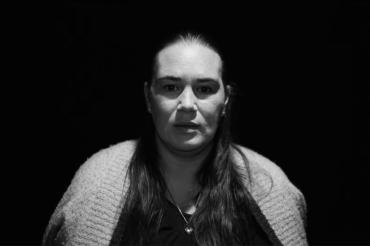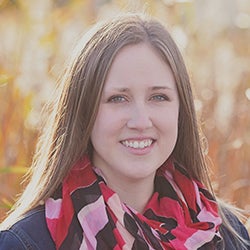Healing the Hurt: Indigenous women lead campaign to educate health-care providers on culturally safe care

The Healing the Hurt campaign features voices of Indigenous mothers, including advisory board member Christena Lopez, who have faced discrimination, anti-Indigenous racism and culturally unsafe care from health providers.
Published: February 11, 2022
The voices of Indigenous mothers who have faced discrimination, anti-Indigenous racism and culturally unsafe care at the hands of health-care providers are being brought to the forefront in a new campaign project called Healing the Hurt: Caring for Indigenous Mothers and Infants.
The awareness campaign features video messages of Indigenous women telling their stories and sharing their traumatic experiences of health care.
Christena Lopez, one of the women featured in the campaign, came up with the idea to share the stories visually, and was actively involved in the project as a member of its advisory board. She and Shawna Hill, who is also a member of the advisory board, describe the impacts of trauma, racism, poverty and bias in how they were cared for as pregnant women and as mothers in some of the first videos to be published as part of the campaign.
They call on health-care providers to treat them and anyone Indigenous with more respect and care.
“I was a statistic, I wasn’t a human being,” says Lopez in a video recounting her prenatal care experience and the loss of her infant daughter. “They [doctors] have power to save people’s lives … they don’t realize that.”
“It makes you wish that you weren’t Native,” says Hill, who describes on camera how she and her daughter were mistreated by a family doctor and racially stereotyped, with the doctor looking for “burns, bite marks and bruises,” on her healthy daughter, and her fear that with just one phone call, “my kids could be gone.”

Amy Wright, a nurse practitioner and assistant professor at the University of Toronto’s Lawrence S. Bloomberg Faculty of Nursing, helped guide the project. It was created with funding from the Canadian Institutes of Health Research (CIHR) in collaboration with the Ontario Friendship Centre – Hamilton Regional Indian Centre, a space that provides social services to Indigenous families with inclusive Indigenous ways of knowing.
“This campaign has demonstrated the resilience of these mothers, and how strong they are,” says Wright. “Even though hearing their stories may be hard or even shocking for health-care providers, it is that discomfort we need to sit with in order to rid ourselves of old perceptions and learn about what is culturally safe care.”
While Wright applied for the project’s funding, she emphasizes that it was Lopez, Hill and other members of the advisory board who led the campaign, including initiating the idea to share their experiences through social media.
Wright says that, in addition to helping women have a voice and educating health-care providers, Healing the Hurt also helps meet one of the Truth and Reconciliation Commission’s Calls to Action for students of health professions.
“It is important for health-care providers and learners to hear these lived experiences and adjust care appropriately,” says Wright. “They need to also remember that they cannot rely on their own perception of what is culturally safe – it is about the patient and what their perception is.”
A lack of culturally safe care can mean Indigenous women do not feel comfortable attending health-care appointments because they are fearful of discrimination or worse. For many young and vulnerable mothers, Wright points out that high rates of Indigenous children being taken from their parents makes mothers afraid to seek the health care they deserve.
“A lot of times women will not even disclose that they are Indigenous because they are so fearful of losing their children,” says Wright. She explains that it was only in the last few years that Ontario stopped the practice of birth alerts, a system that sent notifications to all hospitals in a surrounding area when a pregnant Indigenous patient sought care. Wright says the alerts would often label the woman as unfit and subsequently alert child protection agencies.
“This is why we need health-care providers to check their own biases and prejudice and to educate themselves,” says Wright. “It is one of our main goals of this campaign to invite health-care providers to listen, and to take on the responsibility of learning about the actual history behind these systemic and discriminatory practices in order to change how they provide care.”
She is also hoping that heightened awareness through the Healing the Hurt Campaign will illustrate the importance of connecting Indigenous patients with appropriate and targeted services, including those provided by the Ontario Friendship Centre, where a variety of needs are met – from nutrition services to access to computers and the internet, addiction and mental health services, childcare, as well as programs for residential school survivors.
“The centre wraps a family in these social services to strengthen them and give them access in one place,” says Wright. “Providers being made aware that they can refer patients here is a huge step in addressing the social determinants of health for the Indigenous community.”



